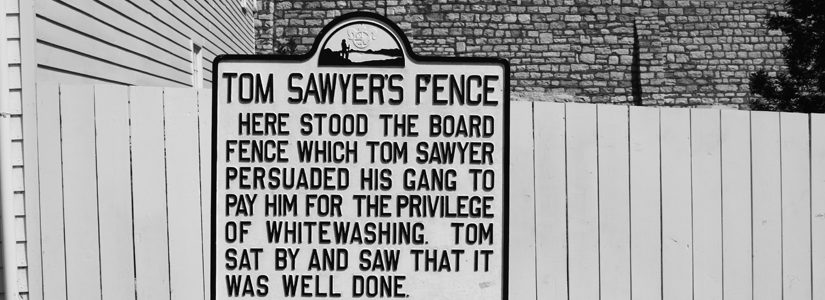
We’re Not Alone!
October 14, 2010 | by Anthony C. Wood, Founder & Chair
Article from the Fall 2010 Newsletter
Over ten years ago when the New York Preservation Archive Project first started to beat its drum for the preservation, documentation, and celebration of the history of preservation activity in New York, we were certainly marching to the beat of a very different drummer. In fact, we were very “out there.” With the exception of a few anniversary moments, it was not part of the culture of preservationists or of preservation organizations, to devote resources or energy to capturing their own history. Preservation’s history was at best an underperforming asset (it was not being used to help inform, education or inspire the movement) or at worse a wasting asset (being lost with the passage of time). Certainly, no one was “sweating the asset.”
Fast forward to 2010. I’m happy to report we are no longer alone in our appreciation of preservation’s history. Others are seeing its importance and not only helping document and preserve it but using it to inspire and inform the movement. The culture of preservation is indeed changing. This is a movement that is beginning to value its own history. Though we cannot take credit for the exciting work that has begun to take place, we would like to think that our beating of that drum was heard and perhaps inspired some of the new energy being focused on telling preservation’s story.
That story is now being told in some exciting ways, one of which is on the Web. Whether it is the Greenwich Village Society for Historic Preservation’s web feature, “Remembering the Pioneers of Greenwich Village Preservation” or Landmark West’s website with its special section documenting its history of advocacy campaigns, preservation history is going viral. The latest entry is a wonderful new feature in the Municipal Art Society’s web updates: “From the Archive.” The September 8th edition featured a December 1936 Christmas Eve Letter from Robert Moses to then Society president, Electus D. Litchfield. As part of its recent move, MAS brought in a professional to help advise it on its archives and that collection is now in the capable hands of Kathy O’Callaghan, Manager of the MAS Archives.
The importance of telling the preservation dimension of larger historic narratives is also being discovered. The Museum of the City of New York’s major exhibit on the administration of Mayor Lindsay, “America’s Mayor: John V. Lindsay and the Reinvention of New York,” not only addresses his preservation legacy but a related special program, “Lindsay’s Forgotten Preservation Legacy: Air Rights and the Strengthening of the Landmarks Law,” puts preservation’s history front and center.
Another example of the growing appreciation of preservation’s history and the need to document and preserve it, is the opening on September 23, of the Historic Preservation Law Archive at Pace University School of Law Library as the home of the collected papers of Dorothy Miner, a NYPAP board member and supporter, and a seminal player in the last several decades of preservation in New York City. Thanks to Dorothy’s brothers, Richard and Robert Miner, Nick Robinson, Dorothy’s teaching colleague at Pace, and the Pace Law Library and Pace’s Environmental Law Program, these invaluable papers now have a permanent home. Too often as families, friends, or associates have had to deal with the possessions of a departed preservationist, the path of least resistance has been the one leading to the dumpster. The creation of this archive to preserve Dorothy’s papers is a model for how to do it right. May it inspire many imitators!
As a small organization, with a tiny treasury and the huge ambition of documenting, preserving and celebrating the history of preservation, NYPAP early on embraced the Tom Sawyer business model. We seek to inspire, cajole and in all ways possible, recruit others to “paint the fence” for us. Preservation’s history is a big fence belonging to us all and it will take all of our combined efforts to get it painted!
It is gratifying to see the culture of preservation beginning to evolve to include a greater recognition and appreciation of the value of preservation’s history. Creative efforts like those mentioned above are emerging. If you know of other such examples let us know so we can hold them up as models. If you’re contemplating an effort and need some help or advice, we’re here. We love to partner on programs and archival initiatives.
We’re no longer alone and it feels great! Come paint the fence with us!




